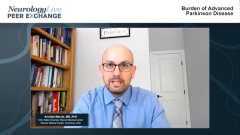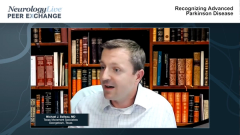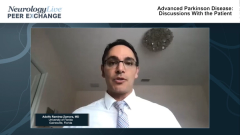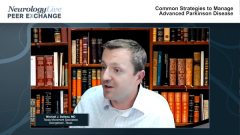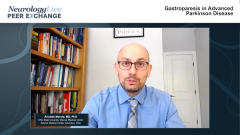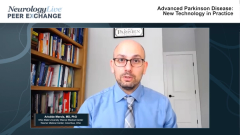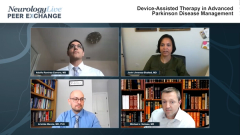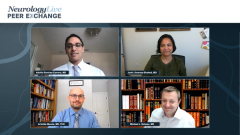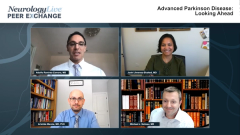
Challenges of Device-Assisted Therapy in Advanced Parkinson Disease
Michael J. Soileau, MD, discusses the challenges of starting a device-assisted therapy in patients with advanced Parkinson disease.
Episodes in this series

Adolfo Ramirez-Zamora, MD: We’re discussing these advanced therapies a lot, but I have to ask, are these therapies for everyone? Would every patient benefit from them, or are there patients who aren’t candidates for it? Any thoughts? Is that something every patient needs to think about? What are the contraindications for some of these therapies? Michael, would you mind taking that question?
Michael J. Soileau, MD: As Joohi and Ari said, I present all these options, and I adjust my talk track accordingly depending on the patient and when we’re discussing this. A good example where that’s relevant is deep-brain stimulation [DBS]. It’s a wonderful therapy that, as a movement disorder specialist, I wish I had access to earlier for my patients. I’m sure all of my colleagues on this panel wish that as well. We would love to be able to talk about these therapies early.
The heartbreaking thing is that—as you said, Adolfo—if someone refers a patient to you, and there’s nothing else to do, I want the patient to have deep-brain stimulation. The patient has already read up on DBS. They’ve watched the videos of how amazing it is, and they come in wanting that. The only problem is, they’re hallucinating, and they can’t remember what they had for dinner yesterday, and they are demented as well. By that point, we know there’s a window of opportunity. After that, deep-brain stimulation may not be the best thing for that patient. In that regard, I don’t think DBS would help patients who are already cognitively impaired with dementia. Everyone gets nervous when we talk about that because all of us, including me with 2 kids at home, will walk into a kitchen and say, “What did I come in here for? I’m not sure,” and everyone gets nervous thinking, “Oh my goodness, I’m not going to be able to have DBS because I can’t remember someone’s name. That’s not what we’re talking about. There’s much more in-depth work-up that’s involved with that, with neuropsychometric testing, and stuff like that.
In a patient with dementia that window of opportunity for DBS is closed in most regards, though there are some exceptions to that. However, that doesn’t mean the end of the road. Just as everyone has alluded to, there are infusions of levodopa that can be given directly into the duodenum. I describe that to my patients like a drip irrigation system on a flower. We make sure that the dopamine or levodopa is getting to where it needs to get to be absorbed so it can go up to the brain, and your brain can do what it knows how to do once it sees the levodopa.
Even patients who have had deep-brain stimulation still need levodopa, and there still comes a point in time where that levodopa, even in a patient with DBS, will not work as well as it used to. A great example of that is freezing of gait and postural instability. Deep-brain stimulation can help with that slightly, but sometimes it can also worsen that. Levodopa certainly helps with that, especially if it’s getting absorbed.
Going back to that concept we mentioned initially of individualizing these recipes for these patients—not just lumping everyone into a motor fluctuation but instead truly treating the specific symptom that they’re struggling with and using a combination of these devices—is often important. But I never want to miss that window of opportunity for deep-brain stimulation. Even with clinical trials, some of the infusion pumps that we have are reversible, so patients can still be eligible. That’s the other thing that I want to make sure our patients know about. But at the end of the day, there’s still hope for those patients who have missed that window. We still have things we can offer them.
Adolfo Ramirez-Zamora, MD: Thank you all for watching this Neurology Live® Peer Exchange. If you enjoyed the content, please subscribe to our e-newsletter to receive upcoming Peer Exchanges and other great content right in your in-box. Thank you so much.
Transcript edited for clarity.
Newsletter
Keep your finger on the pulse of neurology—subscribe to NeurologyLive for expert interviews, new data, and breakthrough treatment updates.

